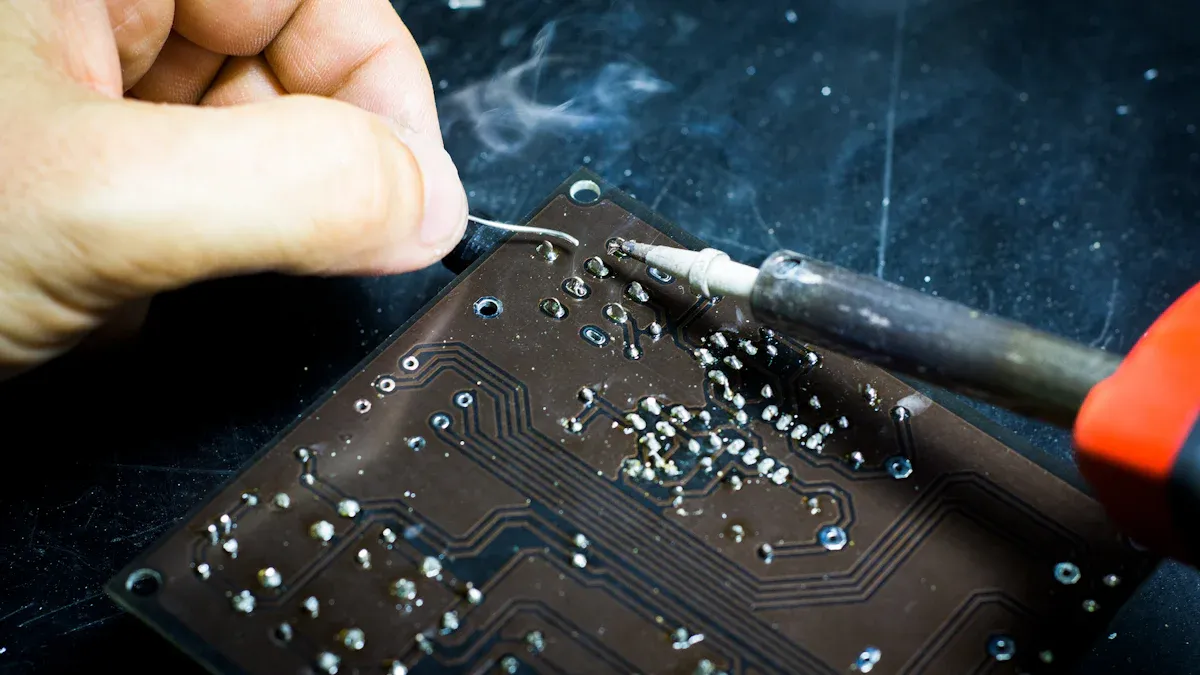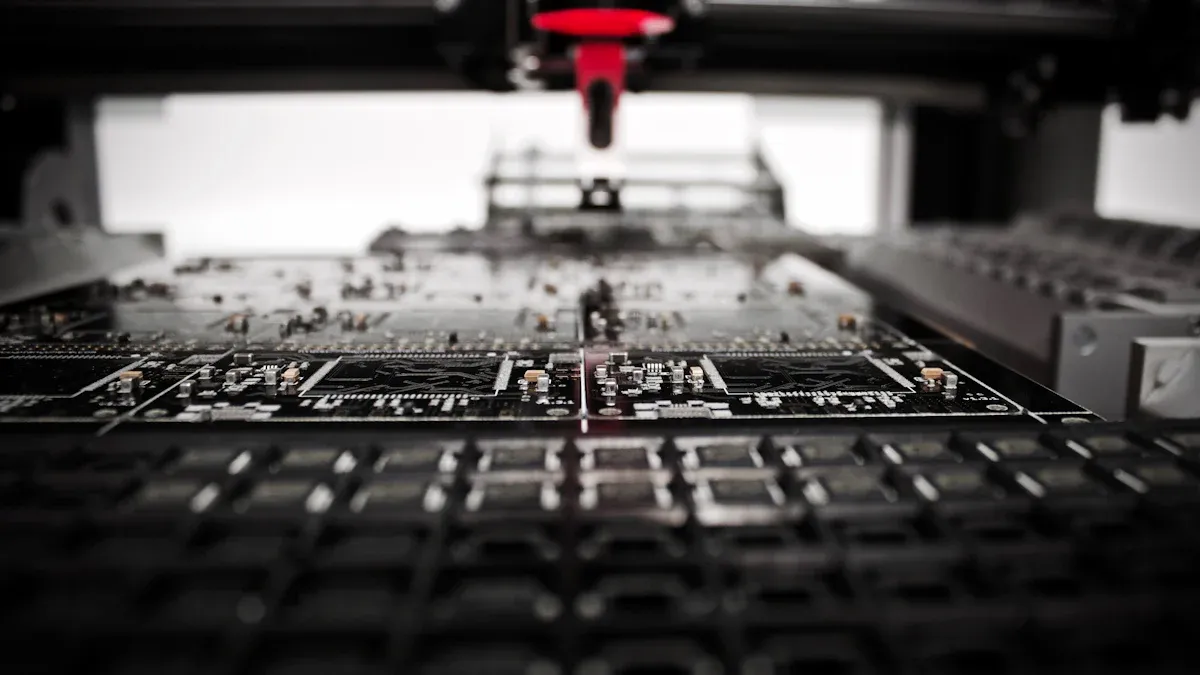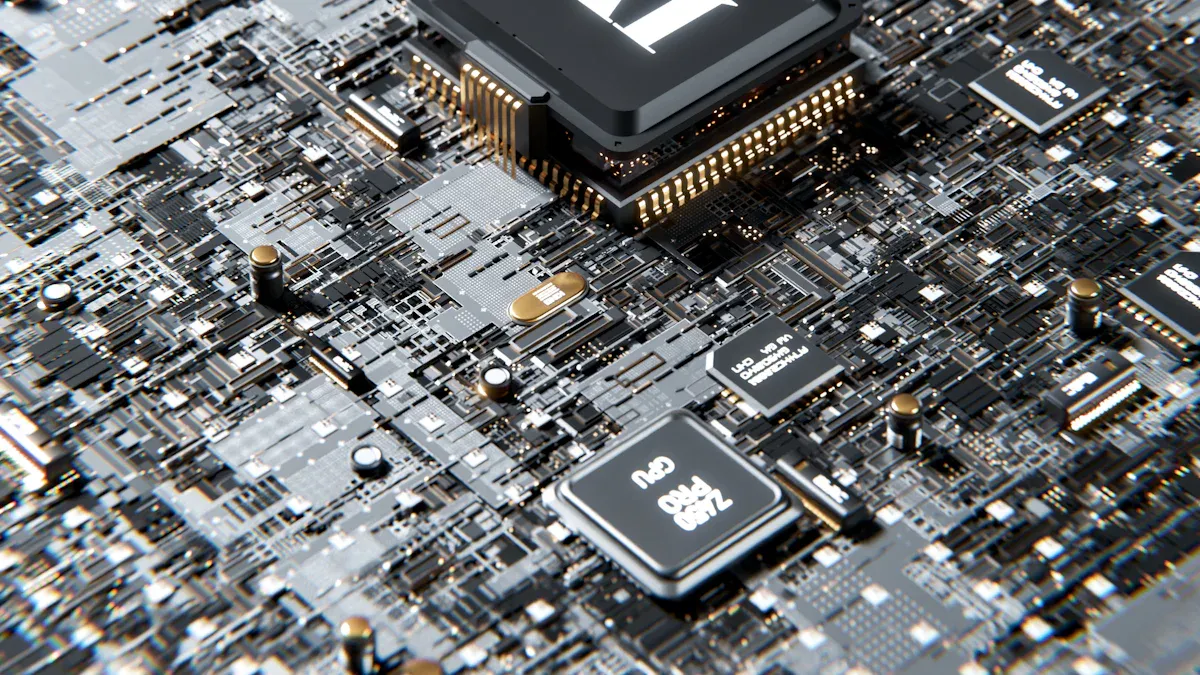
Graphite susceptors play a vital role in semiconductor manufacturing. You rely on them to improve heat distribution and achieve consistent temperatures during MOCVD and EPI processes. Their unique ability to optimize energy usage reduces waste and enhances precision. By using graphite susceptors, you ensure better control, higher efficiency, and superior production outcomes.
Key Takeaways
- Graphite susceptors spread heat evenly, keeping temperatures steady in chip-making. This helps make better products with fewer mistakes.
- Using graphite susceptors saves energy, cuts waste, and lowers costs. This makes the manufacturing process greener and more effective.
- Coated graphite susceptors last longer and handle heat better. They also reduce contamination, improving wafer quality and production numbers.
The Role of Graphite Susceptors in Semiconductor Manufacturing

What Are Graphite Susceptors?
Graphite susceptors are specialized components used in semiconductor manufacturing. You rely on them to hold and support wafers during processes like Metal-Organic Chemical Vapor Deposition (MOCVD) and Epitaxy (EPI). These susceptors are made from high-purity graphite, which is known for its excellent thermal and mechanical properties.
Tip: Graphite susceptors are not just holders; they play an active role in ensuring precise temperature control during wafer processing.
Their design allows them to absorb and distribute heat efficiently, making them essential for achieving uniform results. You’ll find that their ability to withstand high temperatures and harsh chemical environments makes them ideal for demanding semiconductor applications.
How Graphite Susceptors Function in MOCVD and EPI
In MOCVD and EPI processes, graphite susceptors act as intermediaries between the heat source and the wafer. When you use them, they absorb heat from the reactor and transfer it evenly to the wafer surface. This ensures that the wafer reaches the desired temperature for chemical reactions to occur.
Here’s how they work step-by-step:
- Heat Absorption: Graphite susceptors absorb radiant heat from the reactor.
- Heat Distribution: They spread the heat uniformly across their surface.
- Wafer Support: They hold the wafer securely in place during processing.
This functionality is critical for maintaining consistent temperature profiles, which directly impacts the quality of the semiconductor layers. Without graphite susceptors, you would struggle to achieve the precision required for advanced semiconductor devices.
Key Properties of Graphite for MOCVD and EPI
Graphite’s unique properties make it the material of choice for susceptors in MOCVD and EPI processes. You’ll appreciate its ability to perform reliably under extreme conditions.
Here’s a quick overview of its key properties:
| Property | Why It Matters |
|---|---|
| High Thermal Conductivity | Ensures efficient heat transfer and uniform temperature distribution. |
| Chemical Stability | Resists corrosion from reactive gases used in MOCVD and EPI processes. |
| Mechanical Strength | Provides durability and stability during high-temperature operations. |
| Purity | Prevents contamination of wafers, ensuring high-quality semiconductor production. |
These properties allow graphite susceptors to deliver consistent performance, even in the most demanding manufacturing environments. When you use graphite susceptors, you benefit from their ability to enhance process efficiency and wafer quality.
Efficiency Improvements with Graphite Susceptors

Enhanced Heat Distribution
When you use graphite susceptors, you benefit from their ability to distribute heat evenly across the wafer surface. This is crucial in processes like MOCVD and EPI, where precise temperature control directly impacts the quality of the semiconductor layers. Graphite susceptors absorb heat from the reactor and spread it uniformly, ensuring that no part of the wafer overheats or remains too cool.
Did you know? Uneven heat distribution can lead to defects in the semiconductor layers, reducing the performance of the final product.
The high thermal conductivity of graphite makes it an ideal material for this purpose. It ensures that heat flows quickly and efficiently, minimizing temperature gradients. By improving heat distribution, graphite susceptors help you achieve consistent results and reduce the risk of production errors.
Achieving Temperature Uniformity
Temperature uniformity is essential for producing high-quality semiconductors. Graphite susceptors play a key role in maintaining a stable temperature across the entire wafer. This uniformity ensures that chemical reactions occur evenly, leading to consistent layer thickness and composition.
You might wonder how graphite susceptors achieve such precision. Their design and material properties allow them to resist temperature fluctuations and maintain stability even under extreme conditions. This means you can rely on them to deliver consistent performance, batch after batch.
- Key Benefits of Temperature Uniformity:
- Reduces the likelihood of defects in the wafer.
- Improves the overall yield of the manufacturing process.
- Enhances the performance and reliability of the final semiconductor devices.
When you prioritize temperature uniformity, you not only improve product quality but also reduce waste and rework, saving time and resources.
Optimizing Energy Utilization
Energy efficiency is a critical factor in semiconductor manufacturing. Graphite susceptors help you optimize energy utilization by efficiently transferring heat to the wafer. Their high thermal conductivity ensures that minimal energy is lost during the process.
Tip: Using energy-efficient components like graphite susceptors can significantly lower your operational costs over time.
In addition to reducing energy waste, graphite susceptors contribute to a more sustainable manufacturing process. By maximizing the use of available energy, they help you minimize your environmental footprint. This makes them an excellent choice for companies looking to balance performance with sustainability.
When you incorporate graphite susceptors into your processes, you gain a competitive edge by improving efficiency and reducing costs. Their ability to enhance heat distribution, maintain temperature uniformity, and optimize energy usage makes them indispensable in modern semiconductor manufacturing.
Advancements and Benefits of Graphite Susceptors
Coating Technologies for Improved Performance
You might wonder how graphite susceptors continue to meet the growing demands of semiconductor manufacturing. One key advancement lies in coating technologies. Manufacturers now apply specialized coatings, such as silicon carbide (SiC), to enhance the performance of graphite susceptors. These coatings improve resistance to wear and chemical corrosion, extending the lifespan of the susceptor.
Coated graphite susceptors also offer better thermal stability. This ensures that they maintain their structural integrity even under extreme temperatures. By using coated susceptors, you can achieve more consistent results and reduce the frequency of replacements, saving both time and resources.
Note: Coating technologies not only improve durability but also minimize contamination risks, ensuring higher wafer quality.
Impact on Wafer Quality and Yield
Graphite susceptors directly influence wafer quality and production yield. Their ability to provide uniform heat distribution and temperature stability ensures that each wafer meets strict manufacturing standards. This consistency reduces defects, leading to higher yields and better-performing semiconductor devices.
When you use high-quality graphite susceptors, you minimize the risk of uneven layer deposition. This results in wafers with precise thickness and composition, which are critical for advanced applications like microprocessors and LEDs.
Innovations Driving Future Efficiency
The future of graphite susceptors looks promising, thanks to ongoing innovations. Researchers are exploring new materials and designs to further enhance efficiency. For example, advanced 3D printing techniques allow for the creation of custom susceptor geometries, optimizing heat transfer and energy utilization.
You can also expect breakthroughs in coating materials, offering even greater resistance to extreme conditions. These innovations will help you achieve higher precision, lower costs, and a more sustainable manufacturing process.
Graphite susceptors play a crucial role in improving efficiency and precision in MOCVD and EPI processes. You benefit from their ability to enhance heat distribution, maintain temperature uniformity, and optimize energy usage. With ongoing advancements, these components promise even greater reliability, helping you achieve superior semiconductor manufacturing outcomes while reducing waste and costs.
FAQ
What makes graphite susceptors better than other materials?
Graphite offers high thermal conductivity, chemical stability, and mechanical strength. These properties ensure efficient heat transfer, durability, and resistance to harsh conditions in semiconductor manufacturing.
How do coatings improve graphite susceptors?
Coatings like silicon carbide (SiC) enhance durability and thermal stability. They also reduce contamination risks, ensuring better wafer quality and extending the lifespan of the susceptor.
Tip: Coated susceptors require less frequent replacement, saving time and costs.
Can graphite susceptors reduce manufacturing costs?
Yes, they optimize energy usage and improve wafer yields. Their efficiency minimizes waste and defects, helping you lower operational expenses while maintaining high-quality production standards.


